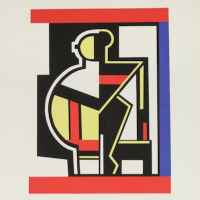
Sweden
Sweden's contemporary art scene is a progressive fusion of traditional aesthetics and cutting-edge creativity. Acclaimed artists like Nathalie Djurberg and Jonas Dahlberg push boundaries with their innovative works. Moderna Museet and Bonniers Konsthall act as platforms for this exploration, hosting diverse artists and exhibitions. Learn more about Sweden's contemporary art landscape on Composition Gallery's website.
Show All
- Show All
- Established
- Discoveries
Show All
ARTWORKS RELATED TO SWEDEN

Cubism is an art movement that aimed to depict multiple perspectives of objects or figures within a single picture. Artists Georges Braque and Pablo Picasso pioneered this style around 1907. The name Cubism emerged from their use of geometric shapes and outlines that often resembled cubes, breaking objects down into abstracted forms.

Mezzotint is a printmaking technique in which a copper or steel plate is roughened to produce a solid black print. The artist smooths specific areas of the plate to create a range of tones, from deep blacks to delicate grays and whites. By varying the degree of smoothing, the artist can achieve detailed gradations of light and shadow, resulting in prints with rich, velvety textures and subtle transitions between light and dark.















